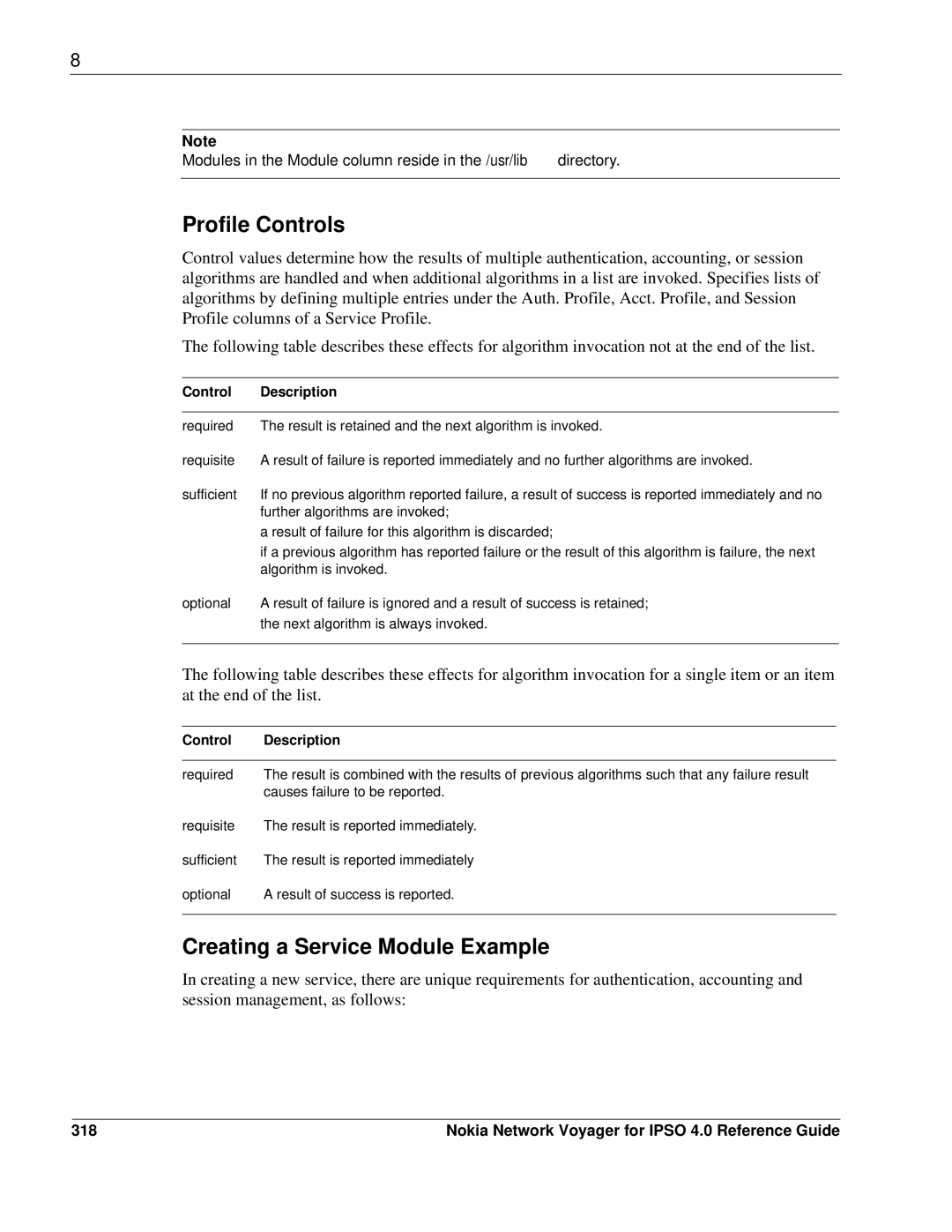
8
Note
Modules in the Module column reside in the /usr/lib directory.
Profile Controls
Control values determine how the results of multiple authentication, accounting, or session algorithms are handled and when additional algorithms in a list are invoked. Specifies lists of algorithms by defining multiple entries under the Auth. Profile, Acct. Profile, and Session Profile columns of a Service Profile.
The following table describes these effects for algorithm invocation not at the end of the list.
Control | Description |
|
|
required | The result is retained and the next algorithm is invoked. |
requisite | A result of failure is reported immediately and no further algorithms are invoked. |
sufficient | If no previous algorithm reported failure, a result of success is reported immediately and no |
| further algorithms are invoked; |
| a result of failure for this algorithm is discarded; |
| if a previous algorithm has reported failure or the result of this algorithm is failure, the next |
| algorithm is invoked. |
optional | A result of failure is ignored and a result of success is retained; |
| the next algorithm is always invoked. |
|
|
The following table describes these effects for algorithm invocation for a single item or an item at the end of the list.
Control | Description |
|
|
required | The result is combined with the results of previous algorithms such that any failure result |
| causes failure to be reported. |
requisite | The result is reported immediately. |
sufficient | The result is reported immediately |
optional | A result of success is reported. |
|
|
Creating a Service Module Example
In creating a new service, there are unique requirements for authentication, accounting and session management, as follows:
318 | Nokia Network Voyager for IPSO 4.0 Reference Guide |
